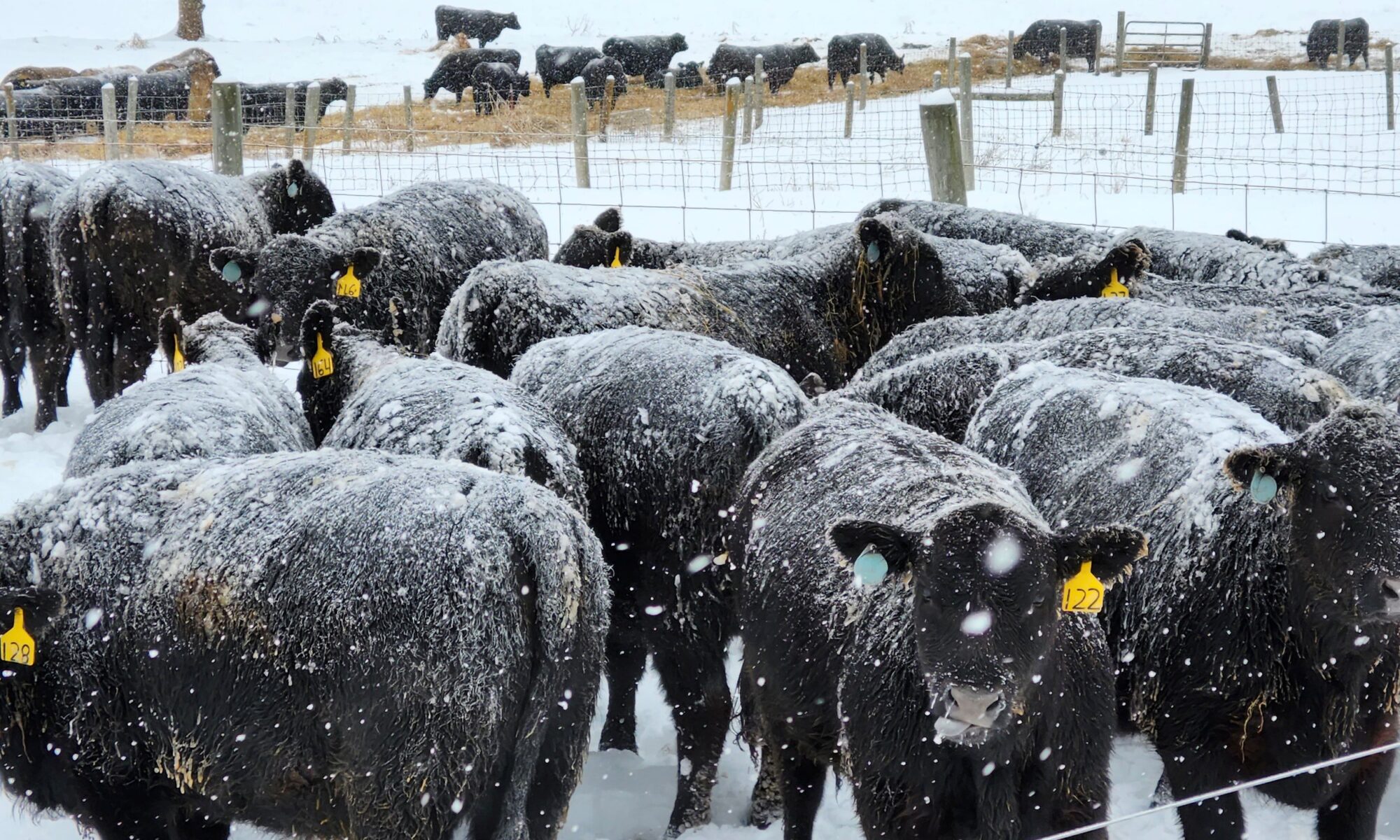

Dr. Lew Strickland
Associate Professor and Extension Livestock Veterinarian
Department of Animal Science
P: 865-974-3150
Last year, an Artic outburst came along in January and surprised all of us with severe freezing weather for several days. So, I decided to search winter weather predictions for Tennessee and found that we will be in a weak La Niña pattern, which typically means that we will experience warmer-than-average temperatures across the southeast. But, as we saw last year, arctic outbreaks can still happen in a La Niña pattern. With this in mind, I’m sending out this article as a reminder of steps that can be taken to prepare and provide for our cattle to cope with the colder temperatures.
What is too cold?
There is a threshold where cattle begin to use energy to maintain their body temperature which called the lower critical temperature (LCT). A cow with a body condition score (BCS) of 5 with a dry heavy winter coat will not need to utilize much energy to maintain a body temperature of 101°F until the wind chill index is below 19°F. Also, wind chill must be factored in when considering the cow’s LCT. To calculate the amount of energy a cow will need, you take the cow’s LCT minus the wind chill index (feels like temp) if no windbreak is provided or ambient temperature if wind break is provided and that would tell you the percent increase in energy requirement. There is a 1% increase in energy needs for every 1° below the LCT. For example, if the ambient temperature is 21°F and wind speed is 10 MPH, the wind chill index (WCI) is 11°F. For a BCS 5 cow with a dry winter coat with an LCT of 19°F, then 19 LCT- 11 WCI = 8% increase in energy needs. Cattle with a BCS of 4 or lower will succumb to the effects of extreme colder weather much quicker and can result in lower body condition which then can influence calves through the dam having poor quality and quantity of colostrum. Energy needs of cattle in various stages can be found at this site, https://edis.ifas.ufl.edu/publication/AN190.
Windbreaks
Providing a wind break can reduce the amount of energy the cow will need to expend. This is an important strategy to offset the impact of wind chill on the animal’s effort to maintain body temperature. This is one of the single most key factors for the success of riding out severe winter weather. Cattle will often seek windbreaks and will prioritize getting out of the wind ahead of food and water. A tree line, stacks of round-bales, barn/buildings, or other man-made structures are examples of effective windbreaks. Windbreaks should be tall enough to provide protection, and if possible, the material should allow a small amount of wind to pass through to provide ventilation.
Bedding
Bedding also is a good management tool to minimize the effect of cold on cattle and can be critical for young calves and to protect teat ends and scrotums. Laying bedding down behind the windbreak will provide a dry place for your cattle. This will require rolling out a round bale or two to create an absorbent base and may require a second application. Use bales that you consider of ‘lower’ quality for the pack and conserve higher quality for feeding.
Feed
It is not recommended to suddenly change a cow’s ration, but feeding an additional amount is a consideration. Cows that normally consume 2.5% of their bodyweight in hay should increase to 3.5%. Digestibility and energy levels in the forage are the key things to focus on. Higher energy forage will help the cattle deal with increased energy expenditure. If higher quality forage is not available, then providing a supplement is recommended. While corn can be used to provide more energy, it comes with risk. Feeding more than 2 to 3 lbs/hd can decrease forage digestion, especially if the forage is lower in protein. Supplementing cattle with grain or by-products is another strategy, especially if the only forage available is low quality. Additional grain may be all it takes but consult with a nutritionist to make sure you don’t overfeed or underfeed the supplement.
Water
Water is another factor to be taken into consideration. Regularly check water tanks to ensure water is clean, free of ice, and in adequate supply. If tanks or ponds freeze over and cannot be utilized, make sure you have access to portable watering equipment or a way to maintain water for your livestock in case of extreme cold and ice. If feasible, use heaters in water tanks to provide livestock with adequate water.
Safety
I know this should be obvious, but your safety is the most important thing to consider. In the middle of everything going on we tend to think of taking care of our animals and we let our own safety go by the wayside. Please be careful if you try to break the ice on a pond or working with electricity in frozen or wet areas. Let others know where you will be and keep your cell phone handy or take someone with you when you go out to feed.
If you have any questions concerning taking care of your animals in freezing weather, please contact your Extension agent or me. Lstrick5@utk.edu, 865-974-3538, or askdrlew.tennessee.edu
Resources adapted from
Helping cows deal with cold stress Mary Drewnoski and Karla H. Wilke, University of Nebraska-Lincoln
Cold Stress and Beef cattle Penn State Extension
Severe Cold Weather Rangeland and Livestock Considerations Colorado State Extension